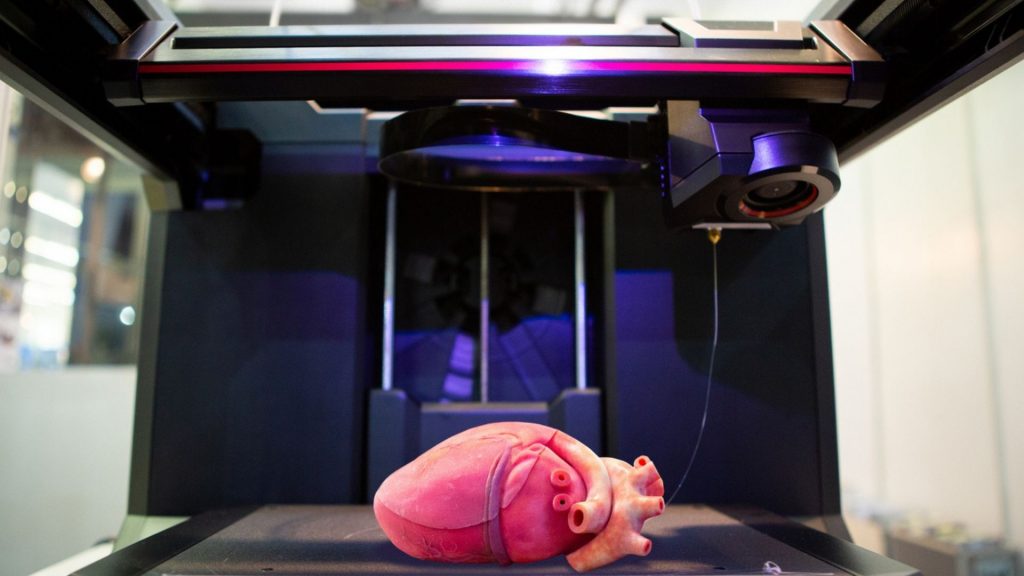MIT scientists have developed a revolutionary 3D-printed heart that functions similarly to a real one. This breakthrough technology will allow doctors to tailor treatments to individuals’ unique heart structures and functions, providing more accurate and effective care.
The team at MIT created a personalized 3D-printed heart that can mimic and control the patient’s ability to pump blood. They began by converting medical images of a patient’s heart into a three-dimensional computer model, which they then 3D printed with a polymer-based ink.
The primary source of data for the study was the medical scans of 15 aortic stenosis patients. The left ventricle and aorta, the heart’s main pumping chamber, were modelled in three dimensions using the photographs of each patient. Using this model as a starting point, they employed a 3D printer to produce a soft, anatomically accurate shell of the ventricle and vascular.
To fit the printed forms, the group also made sleeves. They modified each sleeve’s pockets so that when their respective forms were wrapped around them and attached to a small air-pump system, the sleeves could be tweaked separately to constrict and tighten the printed models realistically.
The innovative heart has an outer silicone layer that imitates the heart’s shape and an inner layer made of hydrogel that acts as the cardiac muscle. The hydrogel layer is capable of expanding and contracting like a real heart, allowing the artificial heart to pump blood in a lifelike manner.
This technology has the potential to revolutionize the way doctors treat heart disease. With the personalized 3D-printed heart, doctors can adjust therapies to match each patient’s unique heart structure and function, providing more precise and effective treatment.
In addition, the 3D-printed heart will allow doctors to test different therapies and medications on a patient’s individual heart without the risks associated with invasive procedures. This will speed up the development of new treatments and enable doctors to provide personalized care that was previously impossible.
The team at MIT is hopeful that their technology will be used to develop more sophisticated artificial hearts in the future, potentially leading to the creation of fully functional replacement organs. The potential applications of this technology are vast and could transform the way we treat heart disease and other cardiac conditions.
Overall, MIT’s breakthrough 3D-printed heart is a major step forward in the field of personalized medicine. By using this technology, doctors can provide more effective and accurate treatments, improving the lives of millions of people around the world who suffer from heart disease.

